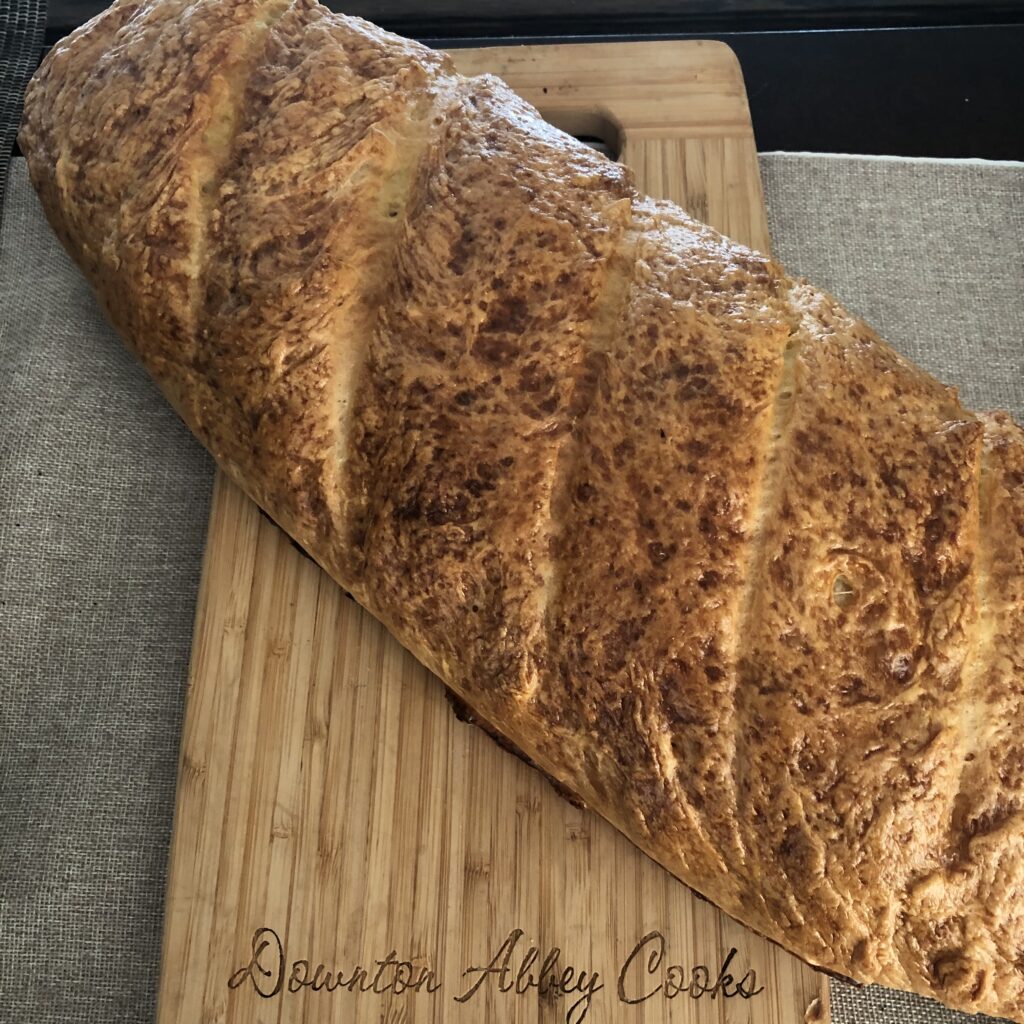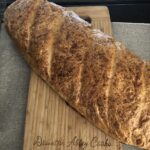>Vienna bread dates back to Vienna, Austria in the 19th century. Typically the bread is baked with an egg wash with a small amount of sugar and butter or shortening. We love it because it is slightly chewy and flavorful with a crust that is golden brown which turns crunchy when toasted. It is usually baked in an oblong shape as a large or smaller loaf. It is rumoured that the small bread was the inspiration behind french baguettes.
This bread is pretty easy to bake, and a great choice for beginners.
Print
Easy Vienna Bread
Vienna bread dates back to Vienna, Austria in the 19th century. This bread is pretty easy to bake, and a good choice for beginners.
Servings 1 loaves
Ingredients
- 1 3/4 cups warm water
- 3 1/2 cups all purpose flour
- 1 tsp. sugar
- 1 tbsp. traditional yeast* see notes for instant yeast
- 2 tbsp. sugar
- 1/3 cup skim milk powder
- 2 tsp. salt
- 2 tbsp. melted shortening
- 1 large egg beaen
- 2 tbsp. milk
Instructions
Proof
- In a 3 cup measure or small bowl, pour 1 3/4 cups warm water. Add 1 teaspoon of sugar, but do not stir. Slowly sprinkle 1 tablespoon yeast into the water, making sure each particle gets wet. Again, do not stir. Wait 10 minutes until the yeast is thick and foamy.
Mix
- While you are waiting, add the following ingredients to your bread bowl, stirring well between each addition: 2 tablespoons sugar, 1/3 cup skim milk powder, 2 teaspoons salt, the yeast, 1 cup flour and 2 tablespoons melted shortening.
Add the Flour
- Quickly add remaining flour 1 cup at a time to make a stiff dough.
Knead
- Turn the dough out onto a very lightly floured surface and knead until smooth and elastic: 10 minutes.
1st Rising
- Clean out your bread bowl, grease it with butter, place the dough in the bowl. Turn over to grease the top, cover with a tea towel and place in a warm, draft-free spot until double: 1 1/2 hours. The ideal spot is your oven. Turn on the oven light and put the bowl on an upper rack. Boil water and pour it into a shallow pan and place it on the bottom rack.
Shape
- The secret to these loaves is that the gluten is well relaxed before shaping. If the dough is stiff let it rest for 10 minutes after punching down before attempting to shape it. Cut the dough into the number of loaves you want, then stretch into an oblong, slapping the centre on your breadboard to help with the stretch. Next roll the dough into a short, fat, rope, tapering the ends. Place it on a greased baking sheet, or use parchment paper to prevent sticking. ee ,seam side down. After rising slash the sticks diagonally 3 or 4 times. When shaped place on a greased baking sheet.
2nd rising
- Place the dough back in your draft-free spot for 30-40 minutes, or until double in bulk.
Egg Wash and Scoring
- Mix the beaten egg with the milk and brush all over the dough before baking. Use a knife to score the bread on a diagonal at least 3 times.
Bake
- Bake in a 400°F oven for 30 minutes, less for smaller loaves. It will be done when it sounds hollow when you tap the bottom. Cool on a wire rack immediately after baking until cool.
Notes
USING INSTANT YEAST
When you are using instant yeast, make the following adjustments
- use 2 tbsp. of yeast
- add all the dry ingredients together, then add the water and shortening and mix.
- your water should be more hot than warm

